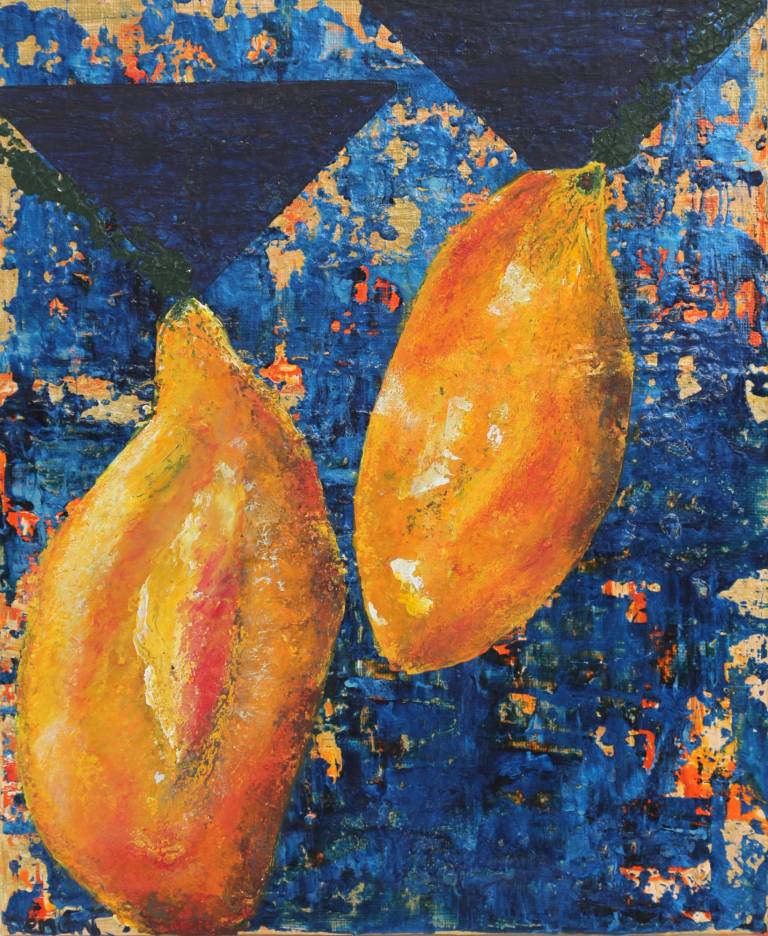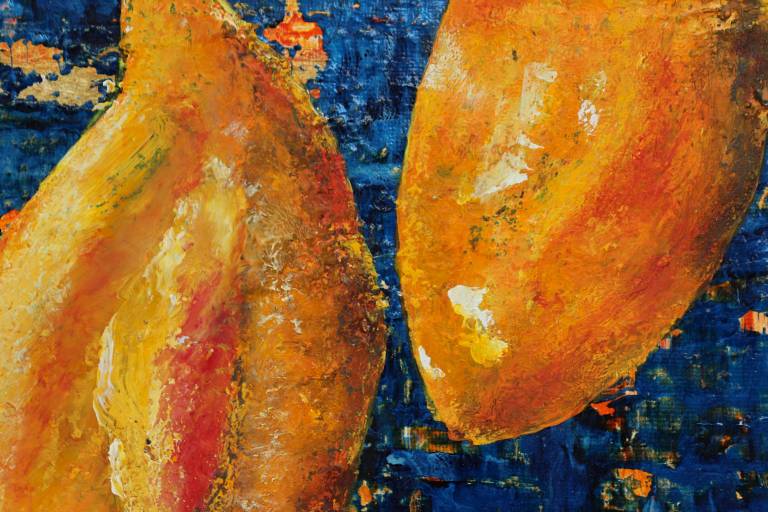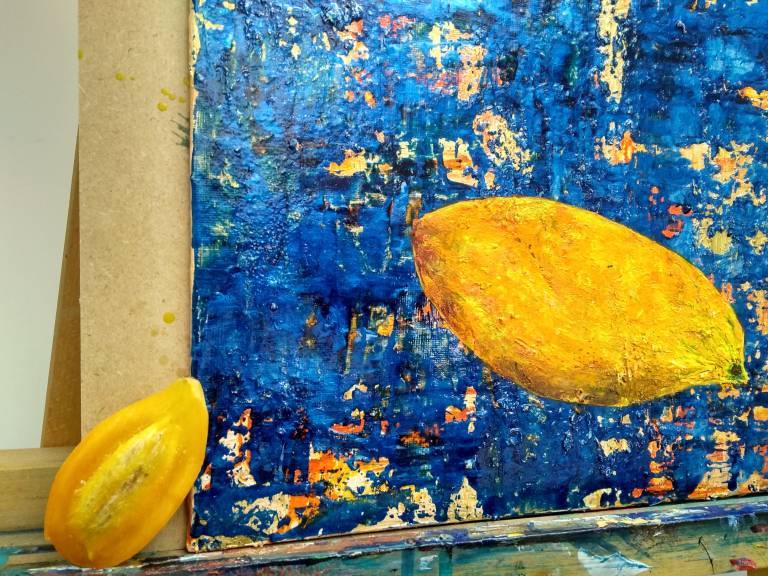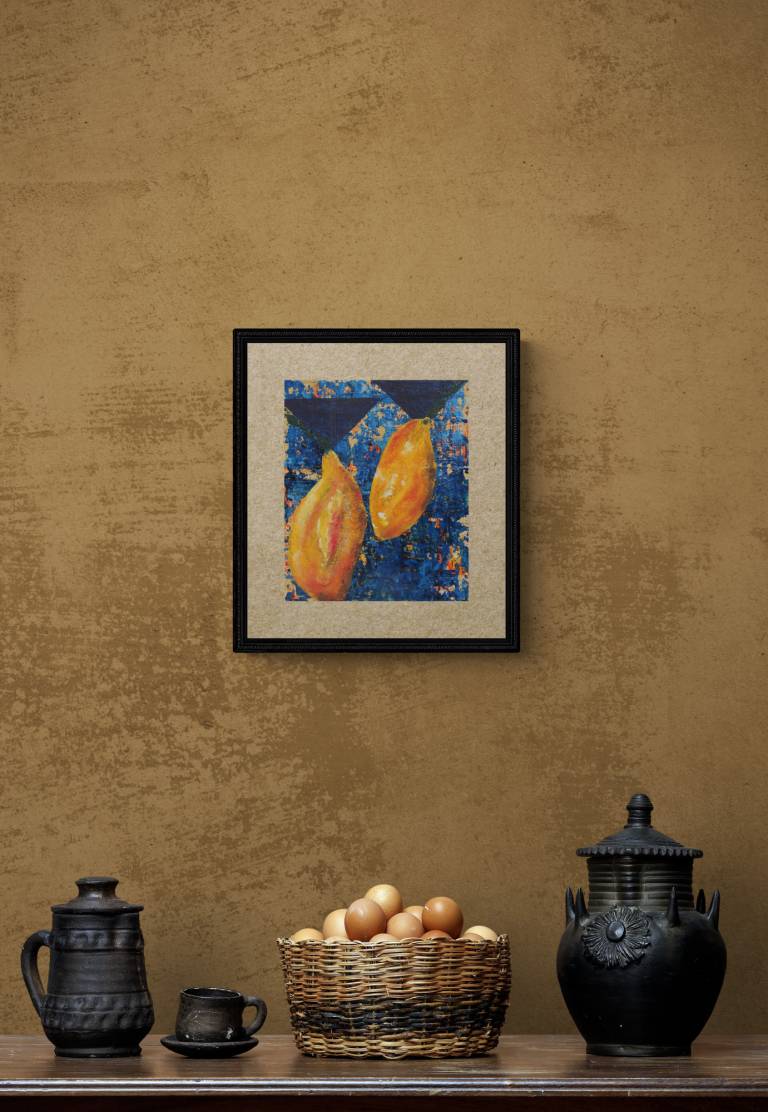MANGO
- Fruit Routes
- Acrylic on board
- 30 x 25.5 cm (11.8 x 10 in)
- Ref: 646514/289
£ 70.00
The subtle orange/deep yellow flesh against bright yellow skin with a saffron hue are colours I adore in mangoes. The flesh is a rich, saturated colour which exudes a radiating, glowing effect.
Mangoes are eaten by cows in India and there is said to be a direct link between this and a rich shade widely used by artists – Indian yellow.
It is a clear, luminescent pigment said to have originated in 16th century rural India from the urine of cattle fed only on mango leaves. Their bright yellow urine was collected and dried, producing hard yellow balls of the raw pigment.
The English word mango originated in the 16th century from the Portuguese manga, which derived from Tamil man (for mango tree) and kay (fruit).
The mango is a truly global traveller: it originated in the foothills of the Himalayas and in Myanmar more than 5,000 years ago, arriving in East Africa with Persian traders in the 9th century. The Portuguese empire took mangoes to Goa and West Africa, and they arrived in Brazil in the 16th Century, eventually reaching Cuba, the Caribbean islands and Mexico.
The mango, which has more than 150 varieties, is the national fruit of India, Pakistan and the Philippines, while it is Bangladesh’s national tree.



